Treating female pattern hair loss
About one-third of women experience hair loss (alopecia) at some time in their lives; among postmenopausal women, as many as two-thirds suffer hair thinning or bald spots. Hair loss often has a greater impact on women than on men, because it's less socially acceptable for them. Alopecia can severely affect a woman's emotional well-being and quality of life.
The main type of hair loss in both sexes — and the subject of this article — is androgenetic alopecia, or female (or male) pattern hair loss. In men, hair loss usually begins above the temples, and the receding hairline eventually forms a characteristic "M" shape; hair at the top of the head also thins, often progressing to baldness. In women, androgenetic alopecia begins with gradual thinning at the part line, followed by increasing diffuse hair loss radiating from the top of the head. A woman's hairline rarely recedes, and women rarely become bald.
There are many potential causes of hair loss, including medical conditions, medications, and physical or emotional stress. If you notice unusual hair loss of any kind, it's important to see your primary care provider or a dermatologist, to determine the cause and appropriate treatment. You may also want to ask your clinician for a referral to a therapist or support group to address emotional difficulties. Hair loss can be frustrating, but recent years have seen an increase in resources for coping with the problem.
Patterns of female hair loss
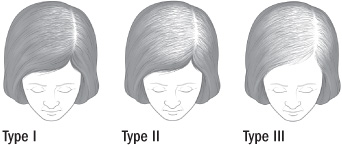
What is androgenetic alopecia?
Almost every woman eventually develops some degree of female pattern hair loss. It can start any time after the onset of puberty, but women tend to first notice it around menopause, when hair loss typically increases. The risk rises with age, and it's higher for women with a history of hair loss on either side of the family.
As the name suggests, androgenetic alopecia involves the action of the hormones called androgens, which are essential for normal male sexual development and have other important functions in both sexes, including sex drive and regulation of hair growth. The condition may be inherited and involve several different genes. It can also result from an underlying endocrine condition, such as overproduction of androgen or an androgen-secreting tumor on the ovary, pituitary, or adrenal gland. In either case, the alopecia is likely related to increased androgen activity. But unlike androgenetic alopecia in men, in women the precise role of androgens is harder to determine. On the chance that an androgen-secreting tumor is involved, it's important to measure androgen levels in women with clear female pattern hair loss.
In either sex, hair loss from androgenetic alopecia occurs because of a genetically determined shortening of anagen, a hair's growing phase, and a lengthening of the time between the shedding of a hair and the start of a new anagen phase. (See "Life cycle of a hair.") That means it takes longer for hair to start growing back after it is shed in the course of the normal growth cycle. The hair follicle itself also changes, shrinking and producing a shorter, thinner hair shaft — a process called "follicular miniaturization." As a result, thicker, pigmented, longer-lived "terminal" hairs are replaced by shorter, thinner, non-pigmented hairs called "vellus."
Life cycle of a hair
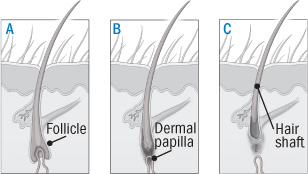
A clinician diagnoses female pattern hair loss by taking a medical history and examining the scalp. She or he will observe the pattern of hair loss, check for signs of inflammation or infection, and possibly order blood tests to investigate other possible causes of hair loss, including hyperthyroidism, hypothyroidism, and iron deficiency. Unless there are signs of excess androgen activity (such as menstrual irregularities, acne, and unwanted hair growth), a hormonal evaluation is usually unnecessary.
Treat Hair Loss Naturally
If you Google "natural hair loss treatments," a long list of tonics, creams, and supplements appears.
But do they work? Paradi Mirmirani, MD, a dermatologist for Permanente Medical Group in Vallejo, Calif., spends a lot of time steering patients away from products recommended by their friends and family members. Most of those products are costly and have little to no benefit.
"Most natural hair treatments are bunk," Mirmirani says.
Though few natural treatments have been well studied for hair loss, there are a handful that may help you hold onto your mane longer if it's starting to disappear.
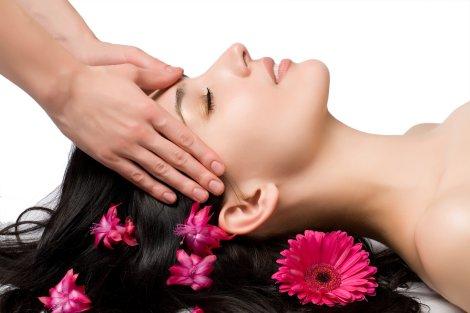
There are several reasons why you may be seeing more hair in your brush than normal. Vitamin deficiencies, thyroid problems, and menopause are all culprits of hair loss.
If there is a medical condition causing your hair loss, it may need to be treated.
"If something needs our attention, you fix that and the hair takes care of itself," says Molly Roberts, MD, MS, president of the American Holistic Medical Association.
Roberts takes a holistic view of the problem. Sometimes medication is needed, but she often tries more general methods first -- such as the following:
Nutrition
Sally Kravich, MS, CNHP, a holistic nutritionist and author, finds in her practice that "vanity is a good way to inspire people (to eat better) -- we all want shiny eyes and radiant hair and skin."
She encourages her patients to get nutrients and minerals from the food they eat. Unfortunately, many people don't have the best diets.
Protein is important to strengthen hair and promote growth. The recommended daily allowance is about two to three 3-oz. servings of meat or a combination of four to five servings of dairy and beans.
Kravich tells patients dealing with hair loss to include nuts and seeds, eggs, and fish in their diets. All are important sources of omega-3 fatty acids, which help reduce inflammation and create a healthier scalp.
It's best to avoid a rut; eat a variety of foods every day. So Kravich recommends eating six to 10 servings of various vegetables daily, two to four fruits, and an assortment of grains and legumes and lean meat products.
Roberts says there are some nutrients that may be helpful for hair:
Iron: Anemia can cause hair loss. But iron supplements are only recommended if you have tested positive for iron deficiency anemia, according to the Cleveland Clinic.
Zinc and biotin: Mirmirani says these supplements are assumed to help with hair growth because people with metabolic disorders lacking them can have thin or brittle hair and nails. She doesn't recommend supplements, but she also doesn't discourage their use.
Saw palmetto is sometimes touted for hair growth, but there isn't enough evidence to back that up, according to the National Institutes of Health.
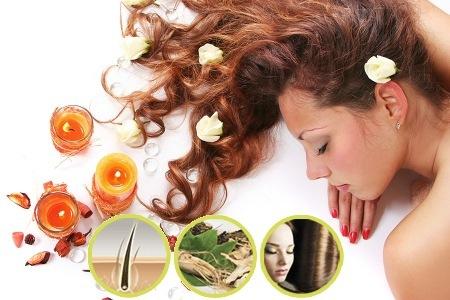
Know Your Supplements
If you are going to use supplements with your hair in mind, be sure to tell your doctor before you start taking them. That way, your doctor can watch out for any possible side effects, including interactions with other drugs you're taking.
Even though supplements don't require a prescription and may be "natural," they're still something your doctor needs to know about, so he or she has a complete picture of everything you're taking.
Though a seal doesn't guarantee safety, the approval of organizations like US Pharmacopeia, and NSF International mean that a supplement was manufactured properly, contains what is on the label, and does not contain harmful levels of contaminants.
Style Notes
Rubber bands, dyes, and perms can be hard on your hair. If your hair is thinning, you don't want to add breakage as well. Be gentle with your hair -- don't overdo brushing or washing, Roberts says.
Some patients quit styling their hair altogether, Mirmirani says. This can lead to thin, unstyled hair, which makes them less satisfied with it.
Mirmirani's advice:
Use scalp coloring products to minimize the contrast between your hair and scalp if it beginning to show through.
Try hair extensions to boost volume.
Keep your hair cut short so it doesn't hang and appear thinner.
Try parting your hair on the side. That takes the focus off the crown, where hair often thins.
Using body-boosting hair products, which can make hair look thicker.
Manage Stress
Losing your hair can be stressful. And unfortunately, stress (physical and emotional) can sometimes increase hair loss.
"Before you start to worry about it, go to a doctor to see if you should worry about it," Roberts says.
More hair in your brush may not be the beginning of the end for your tresses. Roberts says there are times when some extra hair loss is normal -- for women, that includes during menopause, and after pregnancy.
"Hair loss is an emotional thing for a lot of people," she says. "Clearing out that stress may help them hold onto it longer."
Thin Hair Growth
Nobody wants to lose their hair. It’s a symbol of beauty and youth to have a shiny, thick head of hair. However, the reality is that thousands of people deal with hair loss at some level or another. People of both genders face this issue and must grapple with some sort of solution.
Fortunately, men don’t necessarily have to shave their head and women don’t have to immediately start searching for wigs. While the reasons and symptoms of hair loss differ somewhat between genders, many people have been experiencing positive results with natural hair growth treatments.
Dead skin cells and solidified scalp oil (sebum) are among the most significant contributors to hair loss. That’s because these elements actually provide food for harmful bacteria which destroys hair roots and scalp. Therefore, you can do a lot to prevent hair loss by making sure that hair follicles are not clogged by these elements.
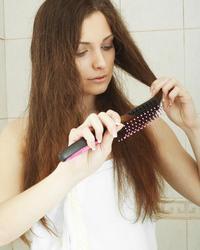
To help you maintain healthy hair follicles, many organic hair loss products include Butterfly Pea or Blue Pea. Butterfly Pea herb has its roots in ancient Thai herbal medicine, boasting decades of use as a hair loss and prematurely graying hair remedy. This herb enables improved blood circulation throughout the scalp which delivers strengthening nutrients to hair follicles.
Among the best natural hair loss treatments are those that feature a combination of Thai and Chinese herbs. Thai and Chinese cultures boast thousands of years of experience with herbs and have helped us pinpoint some herbs that play a key role in new hair growth. The hair loss products that include all natural ingredients, including organic manufacturing processes have shown to deliver the best results.
One of the leading reasons for hair loss is the formation of Dihydrotestosterone (DHT), which deteriorates hair follicles. That’s why we see the inclusion of Saw Palmetto or Serenoa repens (a type of creeping palm) in hair loss products.
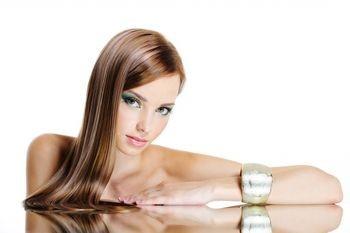
Saw Palmetto is actually capable of blocking the formation of DHT because of its makeup of free fatty acids and phytosterols. These components prevent the conversion of testosterone to DHT. By preventing this chemical binding from occurring, DHT levels drop and new hair growth is then allowed to continue. Stinging nettle or Urtica diocia also effectively blocks the conversion of testosterone into DHT.
You stand a great chance for success by looking for thin hair growth products with the herbs highlighted above. However, it should be noted that you can’t expect immediate results with any thinning hair treatment; unless you decide to use spray paint on your dome. Instead, you need to maintain the ultimate in patience. You’ll typically see results within one to three months after you begin treatment.
However, it may even take up to eight months or so. If you still don’t see any noticeable results after that time then you may want to reconsider your approach and try some new organic-based products that include time-tested herbal remedies.

